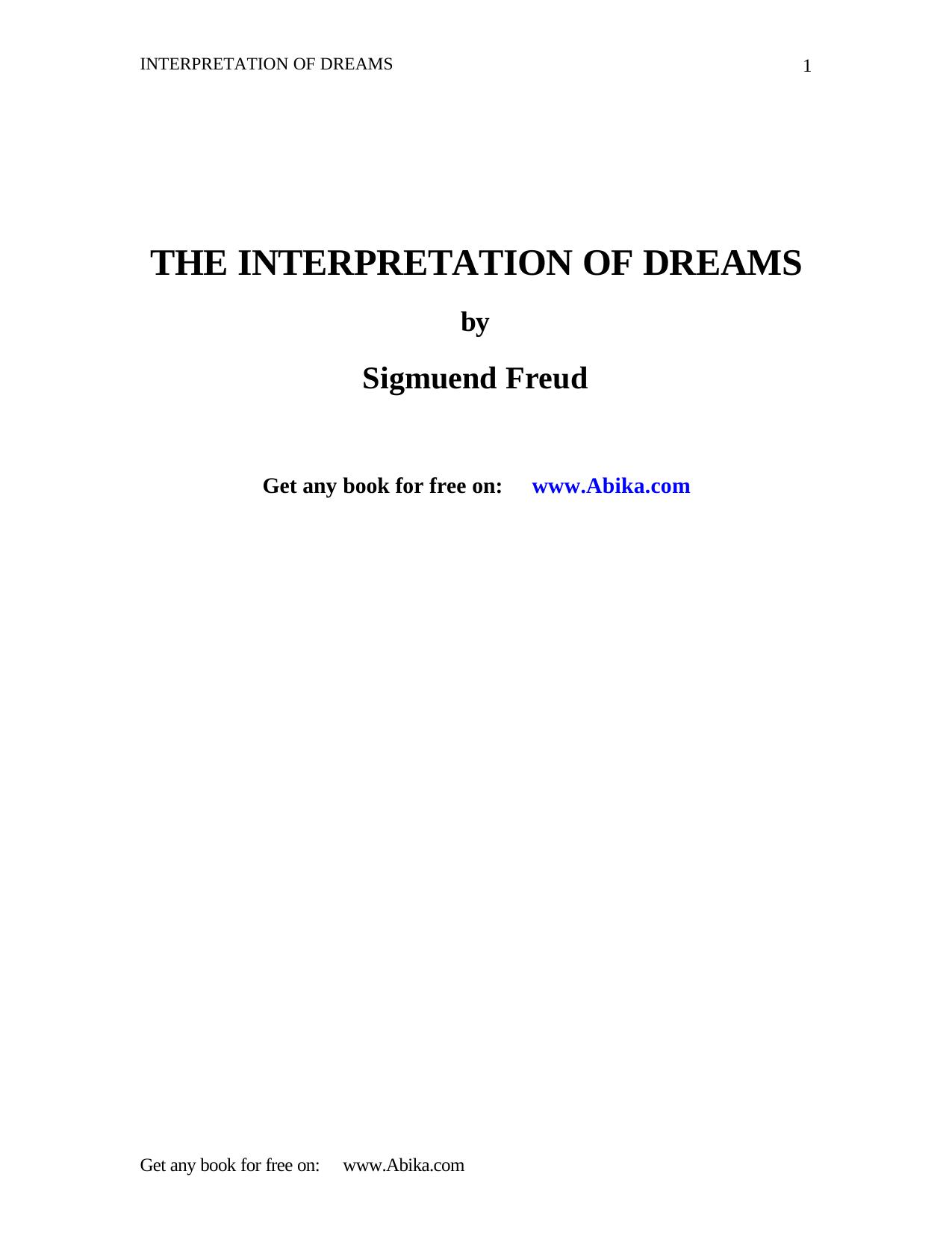The Interpretation of Dreams by Sigmund Freud

Author:Sigmund Freud
Language: eng
Format: epub, azw3, mobi, pdf
Publisher: Oxford University Press
Published: 2015-03-25T10:11:03+00:00
VI
THE DREAM-WORK
Until now every other effort to solve the problems presented by dreams has latched directly on to the dream’s manifest content as it is present in the memory, and has attempted to use this as the basis of an interpretation; or, if it dispensed with an interpretation, it sought to substantiate its judgement of the dream by reference to its content. We are alone in confronting a different state of affairs; as we see it, there is a new kind of psychical material intervening between the content of the dream and the results of our reflections: the latent dream-content reached by our procedure, or the dream-thoughts. It is from this latent content, not the manifest, that we worked out the solution to the dream. This is why a new task faces us which did not exist before, the task of investigating the relationship of the manifest dream-content to the latent dream-thoughts, and of tracing the processes by which the latter turned into the former.
The dream-thoughts and the dream-content lie before us like two versions of the same content in two different languages, or rather, the dream-content looks to us like a translation of the dream-thoughts into another mode of expression, and we are supposed to get to know its signs and laws of grammatical construction by comparing the original and the translation. Once we have learnt what these are, the dream-thoughts will be easy for us to understand without any further ado. The content of the dream is given as it were in the form of hieroglyphs whose signs are to be translated one by one into the language of the dream-thoughts. We would obviously be misled if we were to read these signs according to their pictorial value and not according to their referentiality as signs. Suppose I have a picture-puzzle, a rebus, before me: a house with a boat on its roof, then a single letter of the alphabet, then a running figure with his head conjured away, and the like. Now I could fall into the trap of objecting that this combination and its constituent parts are nonsense. A boat does not belong on the roof of a house and a person without a head cannot run; besides, the person is bigger than the house, and if the whole is supposed to represent a landscape, then single letters of the alphabet do not fit in there, as they certainly do not occur in Nature. Obviously the correct solution to the rebus can only be reached if I raise no such objections to the whole or to the details, but take the trouble to replace each picture by a syllable or a word which, through some association, can be represented by the picture. The words connected in this way are no longer nonsense, but can yield the most beautiful and meaningful poetic saying. The dream is a picture-puzzle of this kind, and our predecessors in the field of dream-interpretation made the mistake of judging the rebus as if it were a pictorial composition.
Download
The Interpretation of Dreams by Sigmund Freud.azw3
The Interpretation of Dreams by Sigmund Freud.mobi
The Interpretation of Dreams by Sigmund Freud.pdf
This site does not store any files on its server. We only index and link to content provided by other sites. Please contact the content providers to delete copyright contents if any and email us, we'll remove relevant links or contents immediately.
Rewire Your Anxious Brain by Catherine M. Pittman(18496)
Talking to Strangers by Malcolm Gladwell(13144)
The Art of Thinking Clearly by Rolf Dobelli(10150)
Mindhunter: Inside the FBI's Elite Serial Crime Unit by John E. Douglas & Mark Olshaker(9113)
Becoming Supernatural by Dr. Joe Dispenza(8047)
Change Your Questions, Change Your Life by Marilee Adams(7574)
The Road Less Traveled by M. Scott Peck(7481)
Nudge - Improving Decisions about Health, Wealth, and Happiness by Thaler Sunstein(7471)
The Lost Art of Listening by Michael P. Nichols(7365)
Mastermind: How to Think Like Sherlock Holmes by Maria Konnikova(7175)
Enlightenment Now: The Case for Reason, Science, Humanism, and Progress by Steven Pinker(7093)
Win Bigly by Scott Adams(7041)
The Way of Zen by Alan W. Watts(6460)
Daring Greatly by Brene Brown(6376)
Big Magic: Creative Living Beyond Fear by Elizabeth Gilbert(5562)
Grit by Angela Duckworth(5456)
Ego Is the Enemy by Ryan Holiday(5236)
Men In Love by Nancy Friday(5121)
Altered Sensations by David Pantalony(5013)
